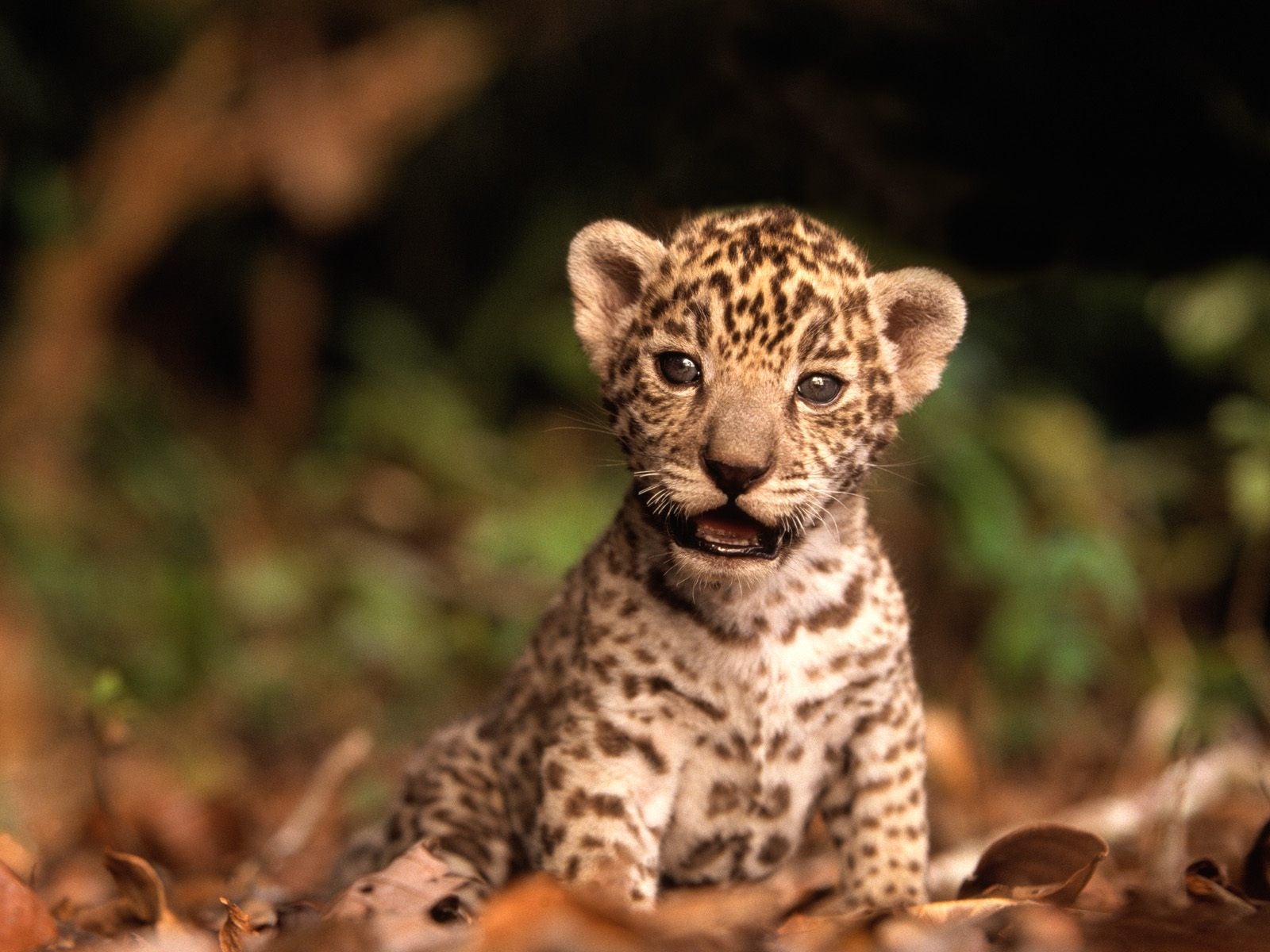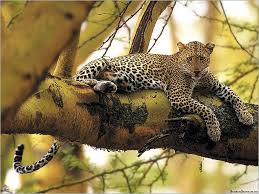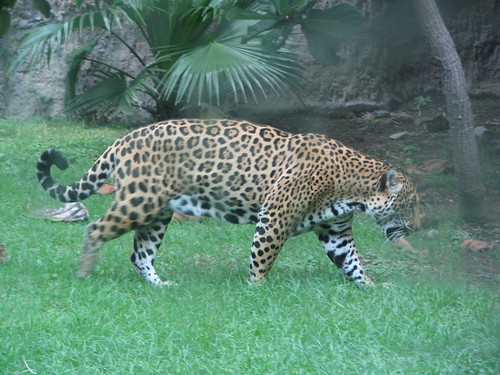Source:- Google.com.pk
Jaguar Animal Pictures Biography
A Species Under Threat
The jaguar (Panthera onca) is the third largest cat in the world, after the tiger and lion, but it is the largest feline in the Western Hemisphere. During the 1960’s and 1970’s, the jaguar was heavily hunted for its beautiful coat. As many as 18,000 wild jaguars were killed each year until the Convention on the International Trade in Endangered Species (CITES) of 1973 brought the pelt trade to a near halt. Today, jaguars continue to be hunted due to conflict with humans who live in fear of them, or view them as a threat to their livelihoods.
While jaguars are faring considerably better than the other big cats, they are listed as “Near Threatened” on the International Union for the Conservation of Nature (IUCN) Red List of Threatened Species.
Even though jaguars have been eradicated from over 40% of their historical range, they still exist in 18 countries in Latin America, from Argentina to Mexico, but are extinct in two countries: El Salvador and Uruguay. While the rare individual has been occasionally spotted in the US, there has not been evidence of a breeding jaguar population in the US in the last 50 years.
Wild jaguars are faced with three main threats:
Habitat loss and fragmentation of once wild areas for agriculture and other human development;
Direct hunting by people, such as ranchers, who view jaguars as a threat to their livelihoods; and
Lack of natural prey, like deer and peccaries, from overhunting by humans, forcing jaguars to prey on domestic animals and fueling the viscious cycle of human-wildlife conflict.
How We're Helping
Panthera’s Vice President, Dr. George Schaller, and Dr. Howard Quigley, Director of the Jaguar Program, began the first comprehensive, ecological study of jaguars in the Brazilian Pantanal in the late 1970's. Almost a decade later, Dr. Alan Rabinowitz, Panthera’s CEO, radio-collared the first jaguars in Belize, leading the country to establish the world’s first jaguar preserve and Belize’s first wildlife protected area – the Cockscomb Jaguar Preserve.
In 2000, new information on jaguars surprised felid biologists: detailed genetic analyses indicated that there were no subspecies of jaguars. Jaguars are the same whether they live in Mexico or Argentina. There is no other large, wide-ranging carnivore in the world with this characteristic genetic continuity throughout its existing range. This revelation led to the creation of the Jaguar Corridor Initiative and is a model that is the defining mandate for Panthera.
Panthera's Jaguar Corridor Initiative (JCI) is working to create a genetic corridor connecting jaguar populations from Mexico to Argentina. Along with Panthera’s partnerships with national and local governments and conservation organizations, the JCI focuses on community outreach to help local communities find solutions to living with jaguars, improve livestock husbandry and reduce conflicts with jaguars.
Saving jaguars range-wide is a winning strategy for conserving vast landscapes and ecosystem functions, and preserving human health and livelihoods. While Panthera’s Jaguar Corridor Initiative is streamlined and focused on jaguars, the impacts go far beyond.
Read Panthera's Jaguar Report Card: The State of the Jaguar.








Jaguar Animal Pictures Biography
A Species Under Threat
The jaguar (Panthera onca) is the third largest cat in the world, after the tiger and lion, but it is the largest feline in the Western Hemisphere. During the 1960’s and 1970’s, the jaguar was heavily hunted for its beautiful coat. As many as 18,000 wild jaguars were killed each year until the Convention on the International Trade in Endangered Species (CITES) of 1973 brought the pelt trade to a near halt. Today, jaguars continue to be hunted due to conflict with humans who live in fear of them, or view them as a threat to their livelihoods.
While jaguars are faring considerably better than the other big cats, they are listed as “Near Threatened” on the International Union for the Conservation of Nature (IUCN) Red List of Threatened Species.
Even though jaguars have been eradicated from over 40% of their historical range, they still exist in 18 countries in Latin America, from Argentina to Mexico, but are extinct in two countries: El Salvador and Uruguay. While the rare individual has been occasionally spotted in the US, there has not been evidence of a breeding jaguar population in the US in the last 50 years.
Wild jaguars are faced with three main threats:
Habitat loss and fragmentation of once wild areas for agriculture and other human development;
Direct hunting by people, such as ranchers, who view jaguars as a threat to their livelihoods; and
Lack of natural prey, like deer and peccaries, from overhunting by humans, forcing jaguars to prey on domestic animals and fueling the viscious cycle of human-wildlife conflict.
How We're Helping
Panthera’s Vice President, Dr. George Schaller, and Dr. Howard Quigley, Director of the Jaguar Program, began the first comprehensive, ecological study of jaguars in the Brazilian Pantanal in the late 1970's. Almost a decade later, Dr. Alan Rabinowitz, Panthera’s CEO, radio-collared the first jaguars in Belize, leading the country to establish the world’s first jaguar preserve and Belize’s first wildlife protected area – the Cockscomb Jaguar Preserve.
In 2000, new information on jaguars surprised felid biologists: detailed genetic analyses indicated that there were no subspecies of jaguars. Jaguars are the same whether they live in Mexico or Argentina. There is no other large, wide-ranging carnivore in the world with this characteristic genetic continuity throughout its existing range. This revelation led to the creation of the Jaguar Corridor Initiative and is a model that is the defining mandate for Panthera.
Panthera's Jaguar Corridor Initiative (JCI) is working to create a genetic corridor connecting jaguar populations from Mexico to Argentina. Along with Panthera’s partnerships with national and local governments and conservation organizations, the JCI focuses on community outreach to help local communities find solutions to living with jaguars, improve livestock husbandry and reduce conflicts with jaguars.
Saving jaguars range-wide is a winning strategy for conserving vast landscapes and ecosystem functions, and preserving human health and livelihoods. While Panthera’s Jaguar Corridor Initiative is streamlined and focused on jaguars, the impacts go far beyond.
Read Panthera's Jaguar Report Card: The State of the Jaguar.
Jaguar Animal Pictures

Jaguar Animal Pictures

Jaguar Animal Pictures

Jaguar Animal Pictures

Jaguar Animal Pictures

Jaguar Animal Pictures
Jaguar Animal Pictures

Jaguar Animal Pictures

Jaguar Animal Pictures
First Wild Sighting - Stalking The Jaguar - BBC Animals
Jaguars, We Must To Protect Them!!!
No comments:
Post a Comment